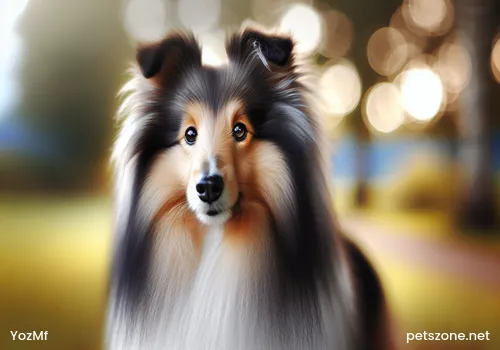How to Train a Teddy Dog to Jump Close

Before training a Teddy dog to come, it is required that the dog, after coming to the trainer, actively sits on the trainer's left side. Usually, there are the following situations:
One is, after the dog comes and sits in front of the trainer, to command the dog to circle from the right side to the left side to sit;
Two is, after the dog comes and sits in front of the trainer, to command the dog to jump in place and sit beside the trainer's left side;
Three is, when the dog comes running to the trainer, to command the running dog to directly leap up, rush forward, contact the trainer’s body, then the dog automatically turns around, and upon landing, completes the action of sitting on the trainer’s left side.
By comparison, it is found that:
The third method is especially suitable for dogs with high excitability and good physical condition. Moreover, after accepting this training, the dog shows strong excitement towards the coming subject, with a noticeably increased running speed when coming. This not only makes the dog's coming appear crisp and neat but also more visually appealing, and it helps increase the dog's interest in other obedience training subjects. The training method is introduced as follows: Step one: cultivate the dog's ability to catch after jumping. The trainer holds one end of a hemp stick to tease the dog to jump high and catch it. The trainer must ensure that each time the dog jumps and catches the hemp stick, it is completed in front of the trainer's chest and as close to the body as possible. When teasing the dog, to provide space for the dog's jump, the trainer should step back slightly when the dog jumps. After the dog catches the hemp stick in the air, the trainer immediately pulls to foster the habit of bite-and-hold without letting go.
Step two: cultivate the dog's ability to spin in the air. Once the dog can jump and catch the hemp stick in front of the trainer's chest, the next step is training: the trainer entices the dog to come catch the hemp stick. The dog jumps while running and bites the hemp stick in front of the trainer's chest. At this time, the trainer stops stepping back, steps forward with the upper body, pulls the hemp stick sharply to the right with the right hand, and simultaneously embraces the dog's body to the left with the left hand. After contacting the trainer's body, the dog naturally turns its body and lands on the trainer's left side. In this training step, the trainer’s actions must be crisp and well-timed. Also, rewarding the dog timely for every small progress is very important, especially the initial few times when the right pull and left embrace can make the dog passive, making rewards essential.
Step three: cultivate the dog's automatic adjustment ability. After multiple trainings, the dog will gradually master the key points of the action after catching. At this point, the dog will be more willing to jump to catch the hemp stick while running, and the coordination with the trainer's forward step, right pull, and left embrace will become skilled. The trainer no longer needs to use force; the dog will turn its body by itself. The trainer can reduce the right-hand pulling gradually until the hemp stick is removed. The stepping will also change from stepping back and forward to standing still. This allows the dog to use the forward momentum from the jump to contact the trainer's chest and abdomen, complete the body turn, and sit on the left side.
In the above training process, the following points should also be noted:
1. Do not rush; only proceed to the next step after consolidating the current step;
2. Encourage and reward the dog frequently with varied methods; the owner's excited tone, happy expression, and conscious pats are especially important;
3. Pay attention to the timing of commands such as jump down, catch, and sit, as too early or late will affect training effectiveness;
4. Adjust your posture and movements timely, coordinate with the dog well to successfully complete the training;
5. Choose the appropriate time and space; preferably train the dog when it is more excited in the morning or evening, and in a quiet environment;
6. Maintain training continuity; training should be continuous without interruption;
7. Begin and end the training with excitement; absolutely no fatigue tactics;
8. Because the jumps and turns in this training are relatively intense, the dog must be trained on an empty stomach; otherwise, it not only affects training results but is more likely to cause harm to the dog. (Source: PetsZone)





